The stocks the Easter Bunny should deliver this year (and some it shouldn't...)
You know things are bad when 1kg of chocolate costs nearly the same price as our biggest bank. That’s right, the RRP of the Lindt Gold Bunny 1kg is $135, compared to $158.70 for Commonwealth Bank. I think it’s a fair comparison: Lindt is arguably, the elite of the supermarket chocolate brands, while Commbank is the elite of the banks.
Let’s break that down.
.png)
Consider our 1kg Lindy Gold Bunny. Imagine you can exercise some restraint and don’t wolf it down in one hit, you might get 20 days of pleasure out of it, 40 days if you follow Lindt’s 25g a day serving size (that’s barely a mouthful…). Then it’s gone… well not entirely, your waistline may still be digesting the 540g of sugar you ingested. But the point is, no more chocolate and money gone.
Then turn to Commonwealth Bank, which stands as a Strong Sell in Market Index’s broker consensus tool and many experts have described as being overvalued. Even factoring that, for your $158.70, you are accruing capital growth and dividends. Even if markets blow up, you could sell it in the 20 days you’ve taken to eat your Lindt Bunny and get most of your money back. That said, much like the challenge of digesting 540g of sugar, if markets gain and you make a return out of selling those shares, your little slice of indigestion might be a capital gains tax to hit come tax time.
Now, I like chocolate as much as the next person (more actually… the Livewire team are well aware of my addiction), but these prices are quite frankly appalling. And while I’ve referenced the Lindt bunny, let’s face it – the sharp increase in cocoa prices has really hit even the old basics like the Cadbury Crème Egg.
It’s time to make a stand – buy shares instead for Easter (and then, overindulge on discounted chocolate a few days later… I’m not so dramatic as to cut chocolate completely). Your portfolio will love you – your waistline might too (until post-Easter…).
Last year, I invited a crack team of experts to form the Aussie Equities Easter Bunny Advisory Committee (AEEBAC) and asked them to sort the chocolate from the carob.
That is, what companies might be the chocolate eggs – that is, popular but not necessarily great for your bottom line – compared to carob – aka less exciting but offering a solid long-term player in your portfolio… The healthy choice?
The AEEBAC is back for 2025, with the following good sports agreeing to support the cause:
- Bradley Clibborn, Portfolio Manager for Bennelong Funds Management
- Emanuel Datt, Principal for Datt Capital
- Justin Woerner, Portfolio Manager for Elston Asset Management
- Steve Johnson, Chief Investment Officer for Forager

The chocolate eggs – short-term satisfaction but watch out for the future
Interestingly, all the nominations sit in the Financials sector – should you be worried? Read on…
1. The banks – Bradley Clibborn and Steve Johnson
My reference to Commonwealth Bank (ASX: CBA) at the start of this article should have been a clue to Australian banks being included here. The Australian banks have been a significant driver of returns (and dividends) in portfolios over the past decades, but there are increasing concerns about their valuations and future prospects.
“A lack of effective reinvestment and increasing competition meant that earnings growth has been anaemic for much of the past decade,” says Clibborn, adding that mortgage brokers now originate 75% of all new mortgages and have been responsible for competition.
“The combination of high valuations while earnings growth prospects are at all-time lows is a very difficult position from which to generate solid returns. In addition, we expect the buying from superannuation funds to slow,” he adds.
Johnson agrees and narrows to Commonwealth Bank specifically.
“At today’s price, it’s a 3% dividend yield and 27x earnings for a business that won’t grow much. I find it hard to see it doing much better than government bonds over the long-term,” he says.

2. Zip Co (ASX: ZIP) – Emanuel Datt
The Buy-Now-Pay-Later (BNPL) sector has been interesting to watch, with consolidation and significant change across the pure-play companies in this space.
“Zip rose to fame during the BNPL boom alongside Afterpay, riding the wave of digital finance enthusiasm and millennial adoption. It was a darling of growth-focused retail investors,” says Datt.
The start of rate rises in 2022 hit many companies hard, but there has since been some recovery. While Market Index’s broker consensus tool positions Zip Co as a Strong Buy, Datt holds concerns.
“While topline revenues have grown, the company has consistently posted heavy operating losses and burned through cash. Profitability remains fleeting and tightening credit conditions have made its business model riskier,” Datt says, highlighting that bigger players like Apple, and even traditional banks, have entered the BNPL space and created competition.
“Zip is exciting in theme, widely recognised, and speculative in nature—but doesn’t pass our test for sustainable, high-quality compounders,” Datt says.
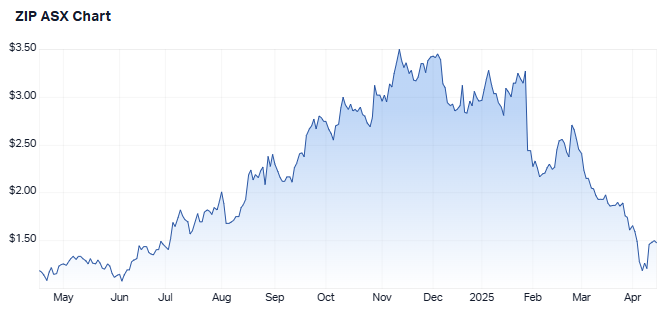
3. Generation Development Group (ASX: GDG) – Justin Woerner
The diversified financial services business has generated strong revenue and ranks as a Strong Buy in Market Index’s broker consensus tool. But Woerner believes the medium term is not as promising.
“With growth coming from the managed accounts segment, we believe the overall quality of the businesses is diminishing. We believe management significantly overpaid for Evidentia at a time when competition within the managed accounts market is escalating.
Competition that is likely to increase the cost of customer acquisition and place downwards pressure on fees. We also query management’s ability to generate operating leverage within some aspects of the business, noting the consulting segment is highly people intensive,” Woerner says.
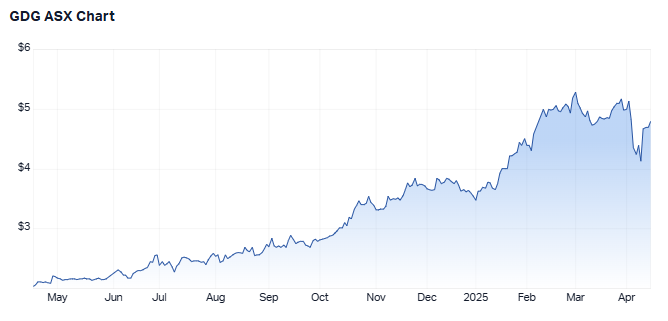
The carob eggs – long-term solid players for your portfolio
These names might not sound as exciting, but investing in them could provide a great long-term boost to your portfolio. Notably, all of these are trading far cheaper than the aforementioned chocolate bunny on a per share basis – and one (IDX) is even cheaper per share than the RRP of a crème egg.
1. James Hardie (ASX: JHX) – Bradley Clibborn
Purely looking at share prices, the market has taken a big bite out of James Hardie's share price over the past few months. Clibborn explains the fibre cement manufacturer has generated some debate over its acquisition of Azek – it fell 14.5% the day of the announcement and a further 10% since due to concerns over the acquisition – but Trump’s tariffs have also come into play.
Clibborn thinks it is relatively well insulated from tariffs. He believes that the earnings growth outlook of the new combined entity is worth investing in.
“Our work confirms that Azek is a high-quality business with a long runway for growth. The growth drivers of AZEK are similar to JHX’s siding business in that we expect Azek to grow by converting homeowners to their superior composite and PVC decking products from traditional wood offerings.
We also believe that Azek will be able to broaden its sales by leveraging JHX’s strong customer network and superior contractor offering,” Clibborn says.
Clibborn also views current prices as an opportunity, highlighting that James Hardie is trading at the bottom of its historical PE range – and Azek has traditionally also traded at a premium to James Hardie.
“We expect that the combined group should be able to grow earnings by strong double digits percentage over the next three to five years,” Clibborn says.
Market Index’s broker consensus tool appears to agree, ranking James Hardie as a Buy.

2. Integral Diagnostics (ASX: IDX) – Emanuel Datt
The Australian diagnostic imaging company ranks as a Strong Buy on Market Index’s broker consensus tool, and Datt notes it benefits from its procurement scale, digital infrastructure and clinical systems.
“Around 85% of its revenue is Medicare-funded, making it highly defensive and largely insulated from economic cycles. Imaging volumes tend to grow steadily with population growth and irrespective of macro volatility,” says Datt.
He also sees a long runway to consolidate smaller imaging providers and integrate AI into workflows.
“While it’s not fast-growing, IDX consistently delivers mid-single digit revenue growth, solid cash conversion, and a reliable dividend yield,” Datt comments.
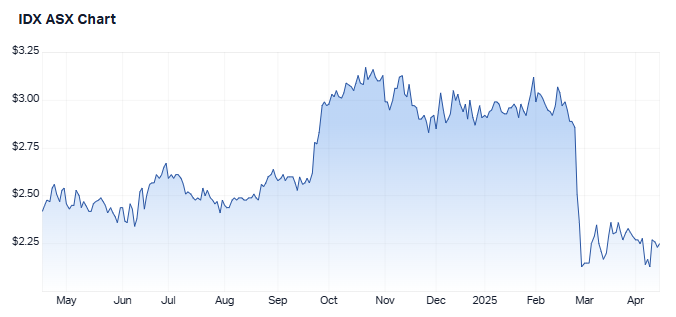
3. PWR Holdings (ASX: PWH) – Justin Woerner
PWR Holdings designs and manufactures cooling products and solutions for motorsports, automotive, original equipment manufacturing, aerospace and defence. It ranks as a Strong Buy in Market Index’s Broker Consensus Tool.
“We view PWH as a long-term quality compounder. The business is underpinned by its motorsport segement, accounting for circa 50% of revenue, growing at around 10% pa,” says Woerner, who also holds a positive view on the founder-led business’ long-term rational management strategy.
PWH has a solid pipeline for the coming year and Woerner is seeing investments in the Defence and Aerospace segments starting to pay off and offer material growth.
The business has been hit by roll-offs and cancellations of some contracts, its investments, and moving its headquarters to a new location, but Woerner sees these issues as short-term.
“We believe the current valuation is attractive. We also see potential for management to drive efficiencies and productivity gains once the new headquarters are fully established,” Woerner says.
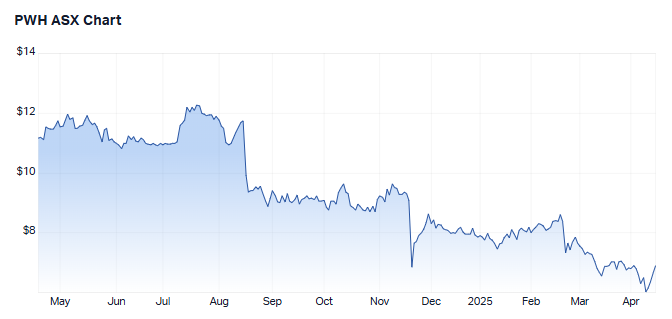
4. Bravura Solutions (ASX: BVS) – Steve Johnson
Bravura Solutions is a provider of software solutions for funds and wealth industries and ranks as a Buy in Market Index’s Broker Consensus Tool.
“Management of this company has executed an extraordinary turnaround over the past 18 months and it is now highly cash generative and returning capital to shareholders,” says Johnson.
It announced a return to profitability in February this year, and upgraded its guidance for FY25 – but stock prices have recently declined.
“After a huge run, the share price has pulled back more than 20% from its post-result highs. That provides an attractive entry point for what should be a cash generation machine,” Johnson says.
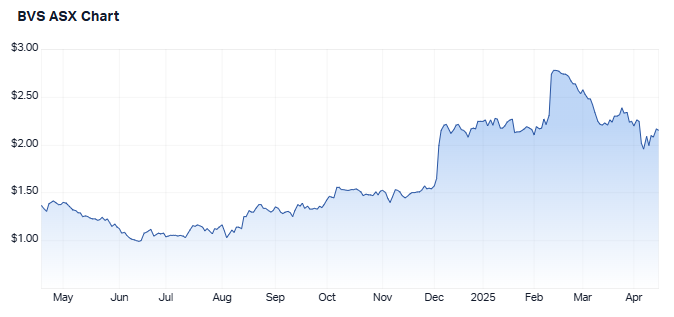
An Easter bonus…
After the whiplash markets have given everyone in the past few weeks, our experts thought an extra bonus from the Easter Bunny might be in order. Here are their favourite stocks to hold for the next five years.
1) James Hardie (ASX: JHX) – Bradley Clibborn
Not only a carob stock, Clibborn believes there’s strength in James Hardie for the next few years.
“We believe the stock could benefit from both strong earnings growth and a valuation re-rate over the next few years,” he says.
While he anticipates the US new housing and remodel markets to be muted in the short-term, he believes James Hardie and recent acquisition Azek can continue to deliver growth above the market.
“As both businesses continue to take share and grow their categories, strong earnings growth and the potential for a multiple re-rate is expected to drive solid outperformance from JHX in the medium and longer-term,” Clibborn comments.
2. Navigator Global Investments (ASX: NGI) – Emanuel Datt
Navigator is a listed investment company which focuses on alternative assets. It focuses on hedge funds, private credit and multi-strategy managers through its subsidiaries Grosvenor Capital Management and other affiliated firms.
Datt is seeing opportunity here, with institutional capital moving towards alternatives for diversification and alpha in a higher rate world.
“Unlike traditional fund managers, NGI earns recurring management and performance based fees without large capital outlays, enabling strong cash flow generation and high returns on equity,” Datt says.
He also highlights the income potential.
“NGI typically offers a solid dividend yield, underpinned by recurring management fee income. This provides income while offering upside from performance fee cycles or strategic M&A,” Datt says.
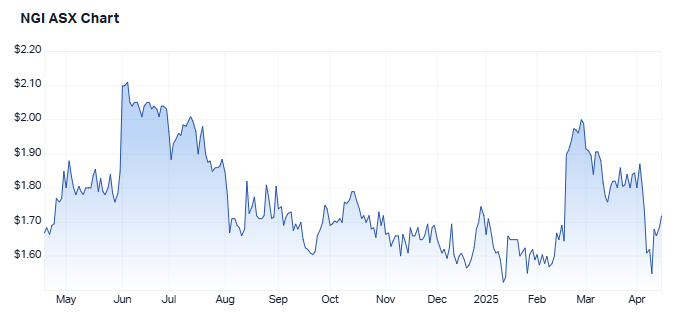
3. Temple & Webster (ASX: TPW) – Justin Woerner
The furniture retailer is Woerner’s pick, and he sees plenty to like, such as its large addressable market, growing customer base at 3-4x the broader population and online spending penetration.
“TPW has built a very strong market position. Compared to its peers, TPW operates a superior business model via its drop ship arrangement. The model is capital light, allowing management to drive a flywheel where reinvestment into marketing and advertising, customer acquisition, website functionality, customer experience and automation, drives further revenue growth and free cashflow."
We believe the business has reached a scale where the width of the moat provides a very high barrier to any new competitor entering the market,” Woerner says.

4. Catapult Group International (ASX: CAT) - Steve Johnson
“It should be no surprise to see our largest investment is the stock we most like over the next five years,” says Johnson.
Catapult Group is a global sports data and analytics company. It’s products and solutions are used by more than 4,000 sports teams and athletes, over more than 40 sports and 100 countries.
“It is expected to comfortably double its revenue over that period of time and management has laid out a path for even more rapid growth in profitability. It’s relatively recession proof, has minimal exposure to tariffs and recently reiterated its guidance for the current financial year,” says Johnson.

Shares or chocolate for Easter?
There you have it, the official recommendations of the AEEBAC. What will the Easter Bunny bring you this year? Let me know in the comments.

1 topic
11 stocks mentioned
3 contributors mentioned
